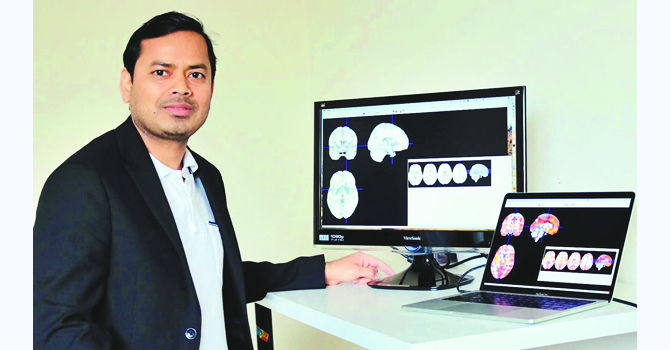KATHMANDU: Schizophrenia, a mental disorder characterized by hallucinations, delusions, disruptions of normal emotions and other cognitive problems, has long baffled medical experts and practitioners.
Nobody knows what exactly causes schizophrenia, how it affects particular patients or how it can be treated effectively. But now, a Nepali scientist and his colleagues have made a potentially groundbreaking discovery in this field.
Dr. Ganesh Chand, as part of a team of researchers from the University of Pennsylvania Medical School, USA, have identified two distinct neuroanatomical variations in schizophrenia. Essentially, they have discovered a second type of schizophrenia, The Rising Nepal reported on Sunday.
According to the report, Dr. Chand and his team have presented their study findings in a paper published in ‘Brain’, an international journal of neurology. The study analyzed the brain scans of 307 schizophrenia patients and classified them into two groups – Type 1 and Type 2.
It then compared their scans with the brain scans of 364 healthy individuals and obtained “surprising results” as stated by Dr. Chand himself.
Type 1, which accounted for 63 percent of the patients, showed considerably lower volumes of grey matter than a healthy brain, something which is already widely known and associated with the illness. But Type 2, comprising 37 percent of the patients, had nearly the same volume of grey matter as a normal brain.
“This second type of schizophrenia patients, that suffer from the disorder even though their brains are almost completely normal, is the big discovery that was never known before,” said Dr. Chand, who is the lead author of the aforementioned paper.
He added, “Given their notable brain differences, these types may have different origins, may progress into a diverse course of illnesses and thus, may require different clinical treatment, planning, and intervention approaches.”
The hope is that when a schizophrenia patient comes to the hospital for care, he/she will be categorized as Type 1 or Type 2 instead of the blanket diagnosis of ‘schizophrenic.’ This way, Dr. Chand and the team expects, patients can receive better personalized clinical assessment and treatment in the future.
The study was a part of the ‘Big-data Schizophrenia Consortium (PHENOM)’ led by Prof. Dr. Christos Davatzikos in collaboration with other scientists and researchers at the University of Pennsylvania and 15 other universities worldwide, including from Germany, China, United Kingdom, the Netherlands, Brazil, Spain, Italy, and Australia.
The published paper also utilizes the expertise of a wide array of experts like imaging physicists, engineers, machine learning scientists, statisticians, medical doctors, psychologists and psychiatrists.









Comment